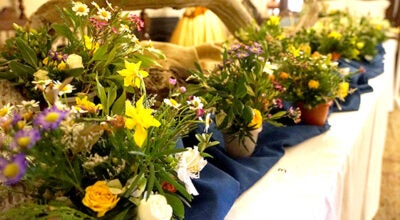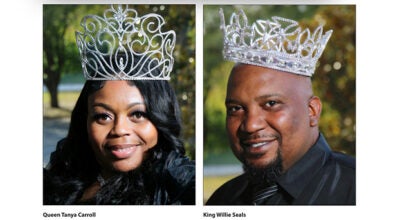Frogmore owner compiles stories from former slaves
Published 12:04 am Wednesday, June 25, 2014

Frogmore Plantation owner Lynette Tanner has worked the past year to compile a book featuring interviews with 42 former Louisiana slaves. The original interviews were conducted in the 1930s as part of a the Federal Writers Project.
Reading the narrations of former slaves who worked and lived on Louisiana plantations brings on an onslaught of emotions for Frogmore Plantation owner Lynette Tanner.
She’s been pleased that some landowners treated slaves as she would employees today and cringed at the inhumane actions of other landowners. The narrations tell a story of a different Louisiana than the one in which Tanner grew up.
But that’s the same reason Tanner felt compelled to compile the stories of the former slaves in a book titled “Chained to the land: Voices from cotton and cane plantations.”
The book compiles the narrations of 42 former Louisiana slaves who were interviewed in the depths of the Great Depression as part of the Federal Writers’ Project, which interviewed more than 2,200 former slaves across 17 states.
“By making these narratives of former slaves, sharecroppers and tenant families easily available, I hope their trials and triumphs, joys and fears will resonate within us,” Tanner said. “It’s important these stories be told and shared.”
Tanner originally became interested in the slave narrations in 1997 when she and her husband, Buddy, were considering opening their property, Frogmore Plantation, in Ferriday for historic tours.
During a trip to Washington, D.C., for an annual National Cotton Council of America meeting, Tanner took a trip to the Library of Congress looking to find any and all information on Louisiana slavery that she could possibly use for her tours.
“I started getting all these copies of ex-slavery narratives from Mississippi, Arkansas and Texas, but I was surprised that Louisiana didn’t have any,” Tanner said. “When I got back home, I didn’t pursue it initially and just pulled information for our tour from interviews with 12 to 15 former slaves who had been interviewed in other states but were slaves in Louisiana.”
Tanner later stumbled onto some narratives from Louisiana slaves and found they had been donated to Northwestern State library, which is in Natchitoches, La., where she went to high school.
Tanner discovered that the majority of the narratives were housed at Melrose Plantation in Natchitoches, where the respected New Orleans writer and journalist Lyle Saxon once lived.
“I found out that he had gotten a lot of those narratives for a project he was doing, but they were never submitted to Washington like all those from the other states were,” Tanner said. “They were stashed away at Melrose Plantation and eventually donated to various libraries.”
Tanner’s curiosity in all things Louisiana sparked her interest in the narratives, but it was the unique French law that dictated the treatment of slaves in the state that pushed her to continue reading each one.
Louisiana slaves lived under Le Code Noir, or “The Black Code,” which set the standards for slave clothing, food and punishment.
But not all plantation owners, Tanner said, adhered to the law.
“Some clearly did not follow the law, so it was only for those with integrity that wanted to treat their slaves right,” Tanner said. “What I also found interesting was that the law specified that slaves should be given the right to work in their spare time for their freedom, so Louisiana had a larger free people of color population because of that.”
Even those that were freed, however, still often found themselves chained to the land they worked.
“Freeing themselves physically and then financially from the cotton and cane, these resilient former slaves were often still emotionally ‘chained to the land,’” Tanner says in the preface of the book. “Their recollections reflect an era like no other, for which America is still experiencing repercussions.”
Tanner said she attempted to preserve the narrations of the former slaves as much as possible, choosing to keep intact some errors in grammar and punctuation left from the original interviews that she says help give the writing a sense of setting and time.
In one transcription, Mary Reynolds, who worked in a plantation not far from Frogmore, says recalling the memories of plantation life during the interview brought back a rush of emotions.
“We jest sats down some times and talks about how we use to cut dat cane in them fields,” the transcription of Reynolds’ interview states. “I knows it was happier times than now.”
Tanner said working on the project for the last year has been an intensive process she couldn’t have completed without the help of many, including her husband, Frogmore co-worker Melissa Powell, Historic Natchez Foundation Director Mimi Miller and Concordia Parish Library Director Amanda Taylor.
“It’s great to be able to hold this book in my hands and see it completed,” Tanner said. “It’s been a busy year.”
The book was released earlier this month and a release party will be hosted July 10 at the Historic Natchez Foundation headquarters on South Commerce Street.





